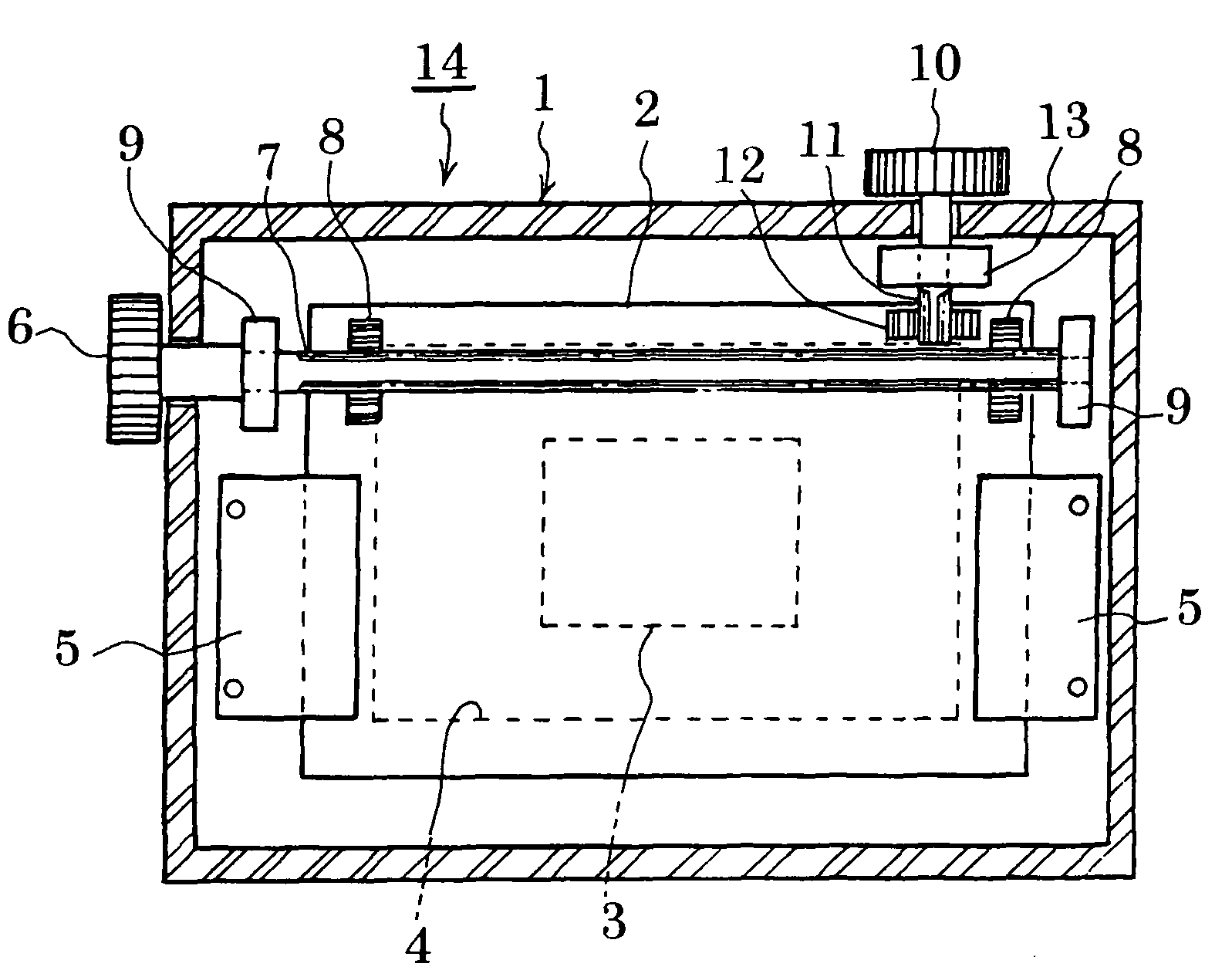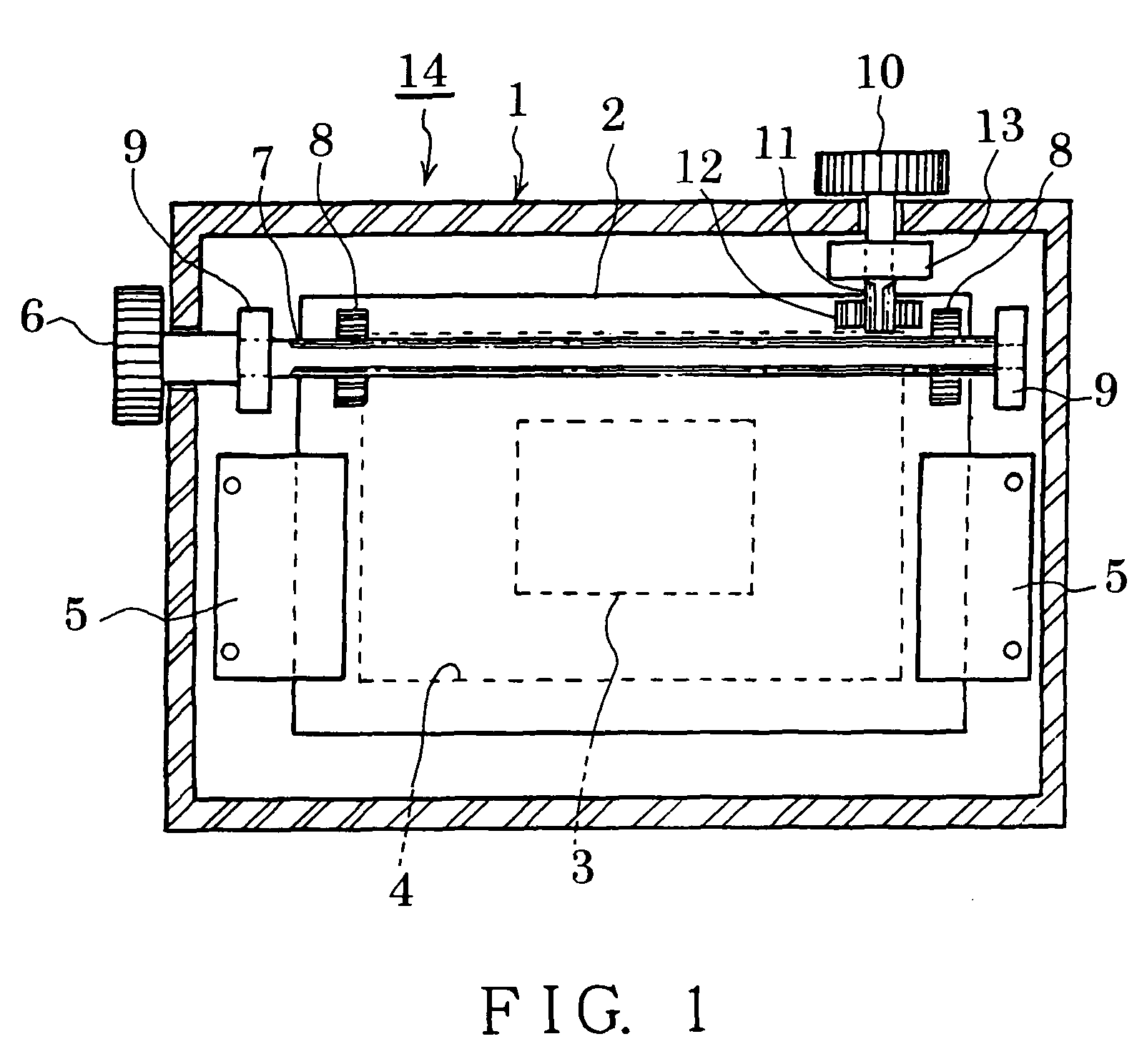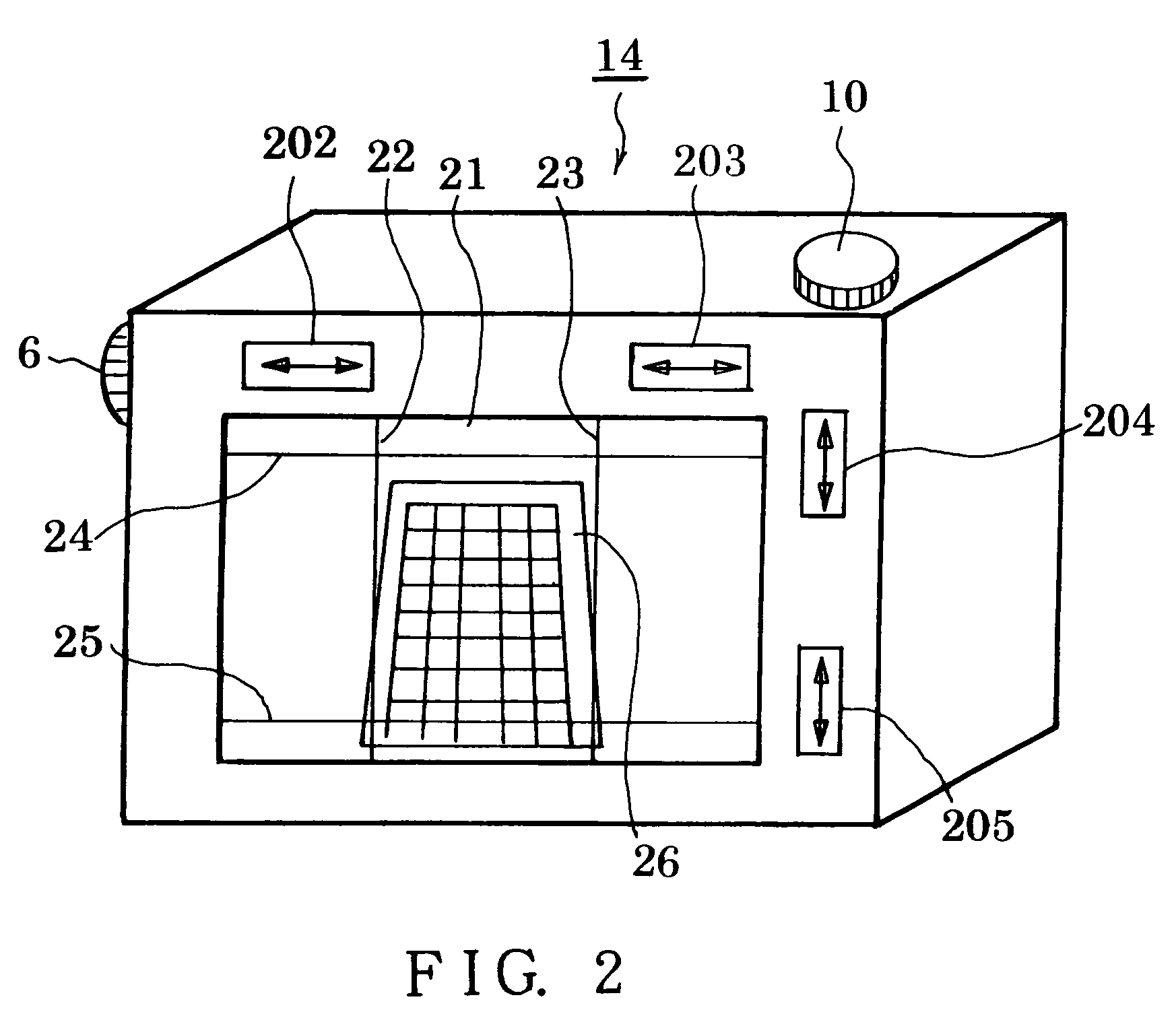Digital camera
a digital camera and camera body technology, applied in the field of digital cameras, can solve the problems of frame or the like not being checked at the time of photographing, the operation of the camera becomes very complicated, and the quality of an image is consequentially deteriorated, so as to prevent the effect of dew condensation, improve the effect of photographing, and ensure the effect of good quality
- Summary
- Abstract
- Description
- Claims
- Application Information
AI Technical Summary
Benefits of technology
Problems solved by technology
Method used
Image
Examples
Embodiment Construction
[0044]It is an object to provide an inexpensive digital camera having a simple constitution in which before photographing, perspective is being observed and is simultaneously adjusted suitably, and distortion of an image such as high building is prevented so that a satisfactory picture. This object is realized by providing a perspective control mechanism that moves an image pickup element to a direction vertical to an optical axis of a photographing lens and longitudinal and lateral directions which are perpendicular to each other so as to adjust the image pickup element. In the best embodiment of the present invention, the digital camera includes a longitudinal direction position adjusting mechanism and a lateral direction position adjusting mechanism that press to attach an image pickup substrate mounted with the image pickup element to be attached to a front surface or a rear surface of a frame (body frame) in a camera main body using a plate spring or the like and independently ...
PUM
 Login to View More
Login to View More Abstract
Description
Claims
Application Information
 Login to View More
Login to View More - R&D
- Intellectual Property
- Life Sciences
- Materials
- Tech Scout
- Unparalleled Data Quality
- Higher Quality Content
- 60% Fewer Hallucinations
Browse by: Latest US Patents, China's latest patents, Technical Efficacy Thesaurus, Application Domain, Technology Topic, Popular Technical Reports.
© 2025 PatSnap. All rights reserved.Legal|Privacy policy|Modern Slavery Act Transparency Statement|Sitemap|About US| Contact US: help@patsnap.com



